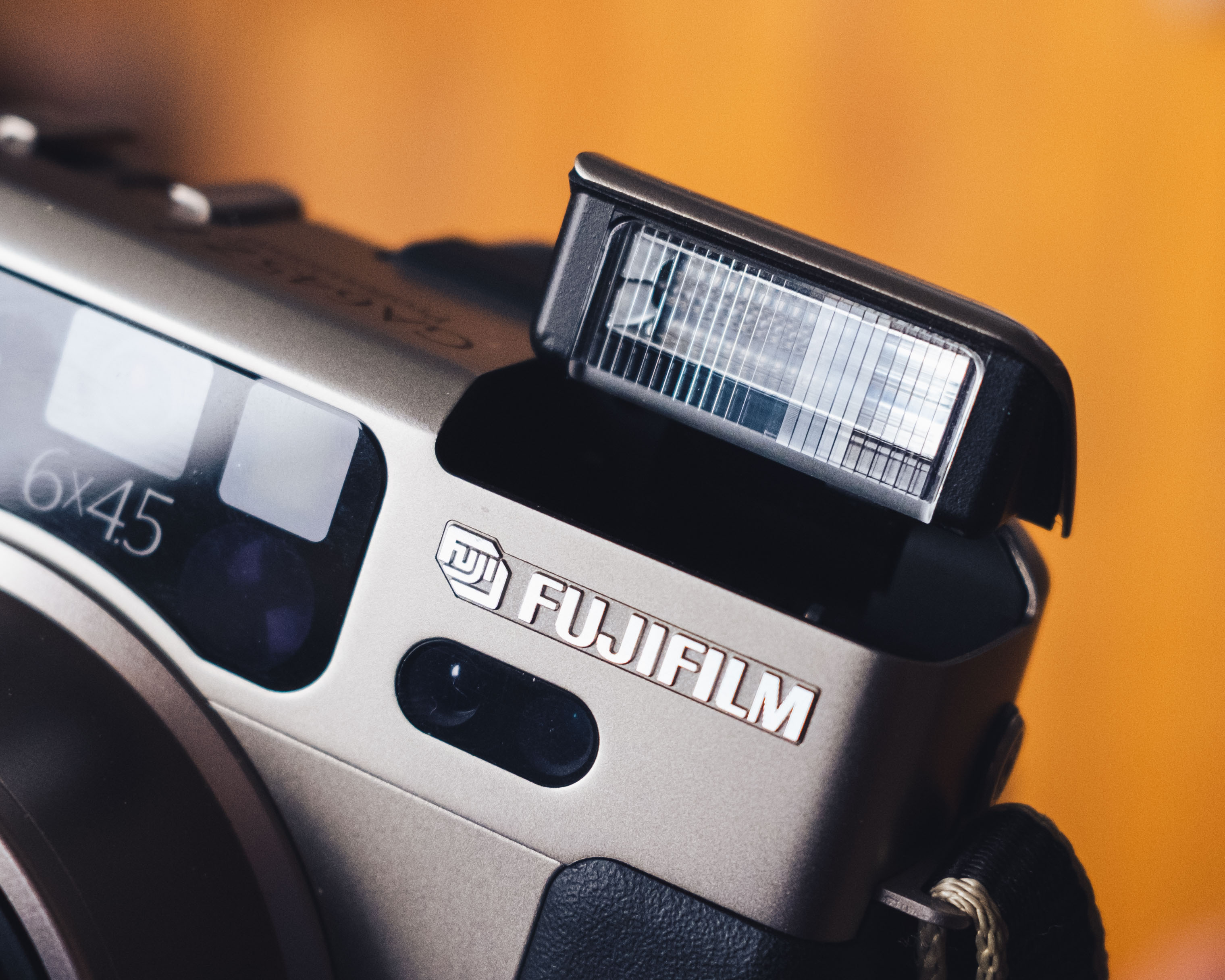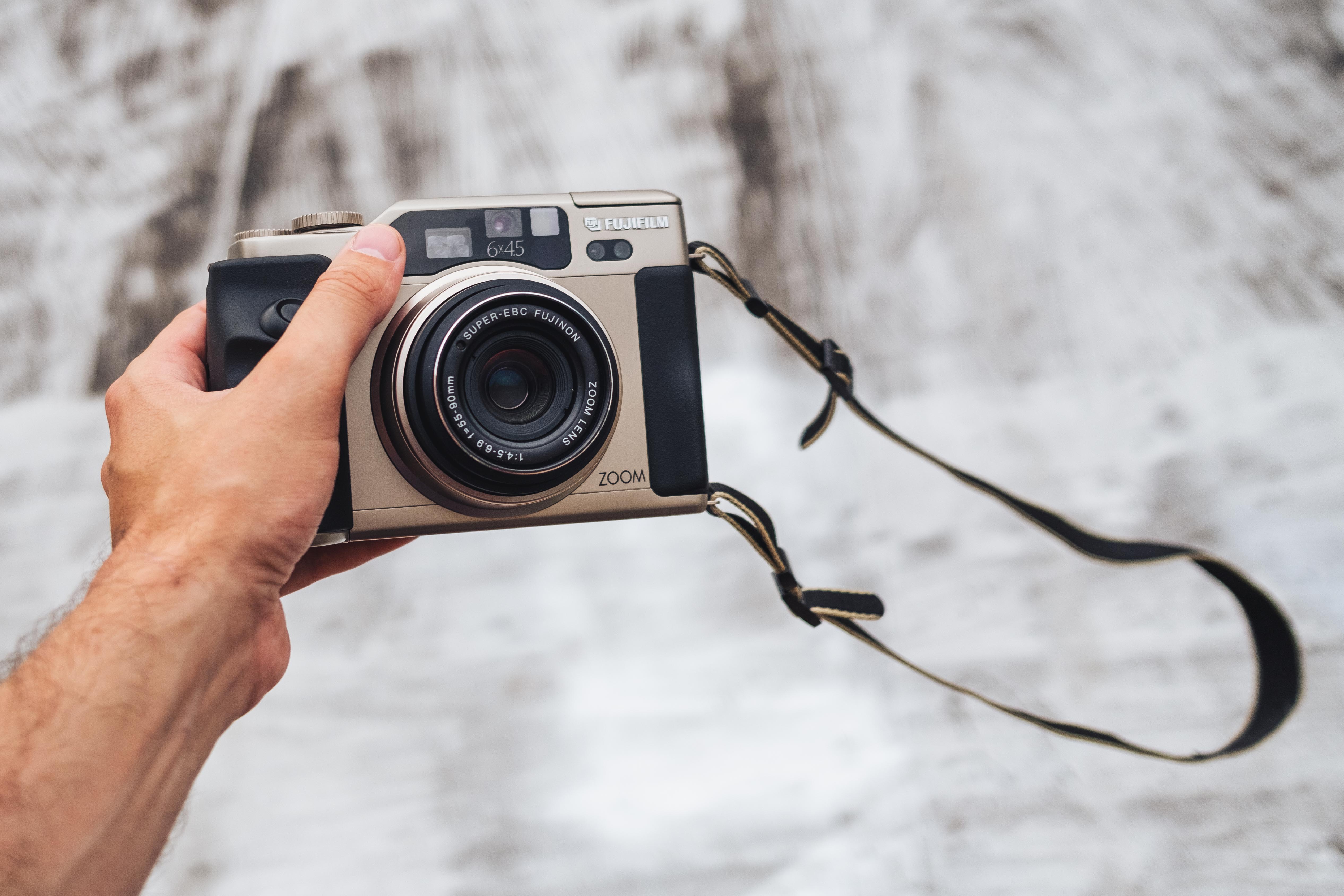A few weeks ago I was helping a man, Rob, figure out how to use his new digital camera at his home. When I told Rob that I liked using film cameras, he became excited and pulled out a Fujifilm GA645Zi that he had up in his attic. He didn't know if it still worked, so he let me borrow it to test it with a roll of film since his knowledge on cameras is limited. The GA645Zi is NOT a cheap camera (fetches around $1000 on eBay), so I was excited for the chance to try one out.
Did the camera work? Well, sort of.
The GA645Zi is fairly unique in that it is a medium format point and shoot camera with autofocus. First released in 1998, the GA645Zi takes advantage of the 645 image format on 120 film, resulting in a negative roughly 2.6 times bigger than with 35mm. The GA645Zi is proudly branded as "professional" on its top plate, but I highly doubt professional photographers of the era depended on this camera for jobs. No, this camera is most likely intended for the enthusiast photographer who takes their daily family snaps a little more seriously than the average person.
The build quality of the GA645Zi feels great. It's sturdy, but also not too heavy. However, one part of the camera that's known to fail is the LCD screen on the rear of the camera. Parts of the screen just go dead over time, and refuse to display information. The camera I borrowed is no different (see photo below). Unfortunately, important info such as your current frame, ISO, and exposure compensation are displayed on the LCD, so having a non functioning screen can really hamper your experience.
Your selected aperture is also displayed on the rear LCD while in aperture priority mode, but luckily it's also viewable in the finder window, which is excellent for a point and shoot.
The finder displays the current aperture and shutter speed on the left, and the focused distance on the right (once you half-press the shutter button to focus). Framelines show parallax compensation, and the finder zooms in and out depending on the focal length you have selected. Due to the 645 format, the finder is vertical, so to make a landscape style shot, you must turn the camera on its side!
Like most point and shoots of the 90's the GA645Zi has a zoom lens. It covers the focal lengths of 55-90mm, which is roughly the same field of view as a 35-55mm lens in 35mm photography. So, it goes from a slightly wide to a normal field of view. The lens has a variable aperture of f/4.5 (at 55mm) to f/6.1 (at 90mm). Not very impressive. This lens is one aspect of the camera that really holds it back, in my opinion. A faster prime lens would be far preferable to this slow zoom that has barely any range.
To help make up for the slow zoom, the GA645Zi has a pop-up flash for darker situations, or when you want a bit of fill. It must be manually activated, even in P mode. In my tests, it exposed my subjects well.
Though labeled as a point and shoot, the GA645Zi affords a good amount of control. Along with Program mode, there is also an aperture priority mode, and even a full manual mode. You can also focus manually, though the process is very clumsy.













